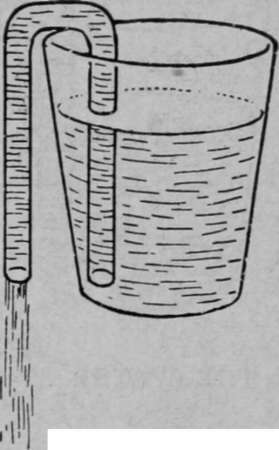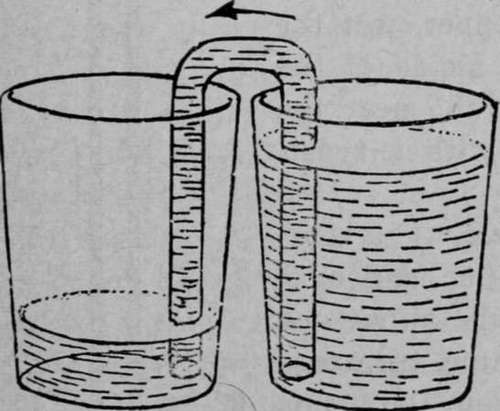Experiment 32. Magic
Description
This section is from the book "Experimental Glass Blowing For Boys", by Carleton J. Lynde. Also available from Amazon: Experimental Glass Blowing for Boys.
Experiment 32. Magic
Put one arm of the siphon in a tumbler of water and suck air out of the other end. Does the water start running and does it continue to run in a most magical way (Fig. 44) until the water is below the end of the siphon in the tumbler?
Fill the tumbler with water again, start the water running, put the outer arm of the siphon in an empty tumbler, and stand both tumblers on the table (Fig. 45). Does the water run up one arm of the siphon and down the other into the empty tumbler? Does it stop running when the levels are the same?
Stand the first tumbler on a book. Does the water run again and stop when the levels are again the same (Fig. 46) ?
Place the lower tumbler on the book and the upper tumbler on the table. Does the water now run in the opposite direction until the levels are again the same? Raise one tumbler a foot or so above the table. Does the water run up over the edge and drop into the second? Now before the upper tumbler is empty, lower it in such a way that an arm of the siphon is in each tumbler, and raise the second tumbler. Does the water now run in the opposite direction?

Fig. 44. A siphon

Fig. 45. From the high level to the low
You boys who have the Gilbert set on "Hydraulic and Pneumatic Engineering" will know that it is the pressure of the atmosphere which causes the water to run up over the edge of the tumbler in this magical way.
Continue to:
